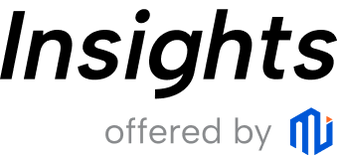Circle raises its IPO funding goal to $896M
Circle and its shareholders have increased the size and price of the company’s initial public offering, reflecting the apparent interest that investors have shown in owning a part of the USDC stablecoin issuer.
According to a Monday filing with the SEC, the stablecoin issuer and some of its backers are now offering 32 million shares at a price range of $27 to $28 per share. Before, they planned to sell 24 million shares at a range of $24 to $26 each.
Companies have shown strong interest in owning Circle stocks
The sale of Circle’s stocks at the current price range could rake in as much as $896 million, handing Circle a market capitalization of nearly $6.2 billion.
Taking into account employee stock options, restricted share units and warrants, the company would have a fully diluted value of about $7.2 billion.
The IPO has drawn orders for stock in double-digit multiples of the shares available, people familiar with the matter have said, and there is still some time before the offering closes to orders at 4 PM New York time on Tuesday.
Various companies have already shown interest in Circle stocks since the talk of the IPO went public.
ARK Investment Management, a technology-focused firm founded by Cathie Wood, may reportedly buy as much as $150 million of shares, according to the filing. Meanwhile, BlackRock Inc. plans to acquire about 10% of the IPO shares.
The IPO is being led by JPMorgan Chase & Co., Citigroup Inc. and Goldman Sachs & Co., and the deal is set to price on June 4, according to documents seen by Bloomberg News. The company will trade on the New York Stock Exchange under the symbol CRCL.
The US IPO scene seeks an activity resurgence
Circle’s decision to increase the funding goal for its upcoming IPO coincides with a period of increased IPO activity in the US.
The first quarter of the year saw US IPO activity at robust levels, with 59 listings raising $8.9 billion, making it the third strongest Q1 on record. Unfortunately, after Trump announced sweeping US tariffs in early April, severe market volatility set in, which led to a sharp decline in the S&P 500, with a year-to-date loss reaching 13% by early April, including a two-day 10% selloff.
The tariffs, which included a 10% universal tariff and higher rates on specific countries, created uncertainty around global trade, supply chains, and corporate earnings, and forced companies to pause IPO plans.
For example, eToro Group Ltd., an Israel-based online trading platform, was forced to postpone its US IPO in early April due to this “Liberation Day” volatility.
Market conditions have been stabilizing since May, partly due to a 90-day pause on some tariffs (except for China), which alleviated immediate financial pressures. That pause, plus strong corporate earnings and hopes for Federal Reserve rate cuts, triggered a market rally, with the S&P 500 recouping nearly all April losses by month-end.
And as volatility eased, IPO activity started showing signs of revival. For example, eToro eventually went public in New York last month and many other IPOs that have launched have been successful, highlighting a healing market.
From your screen to the big screen 📱➡️🗽
We lit up Times Square.
To our 40 million registered users, this moment is yours too. Thank you 💚#eToroIPO #NasdaqListed
⚠️ This shall not constitute an offer, or the solicitation of an offer, to buy or sell these securities. Your… pic.twitter.com/O7U2kKndyk
— eToro (@eToro) May 15, 2025
While IPOs are finally showing signs of life again with listings lining up, analysts have cautioned that prolonged trade tensions could still suppress future IPOs, with companies needing to time their market entries carefully.
So while it is confirmed the US IPO market is restarting, the recovery is still fragile, and ongoing trade policy uncertainty as well as potential inflation risks pose challenges.
KEY Difference Wire helps crypto brands break through and dominate headlines fast



